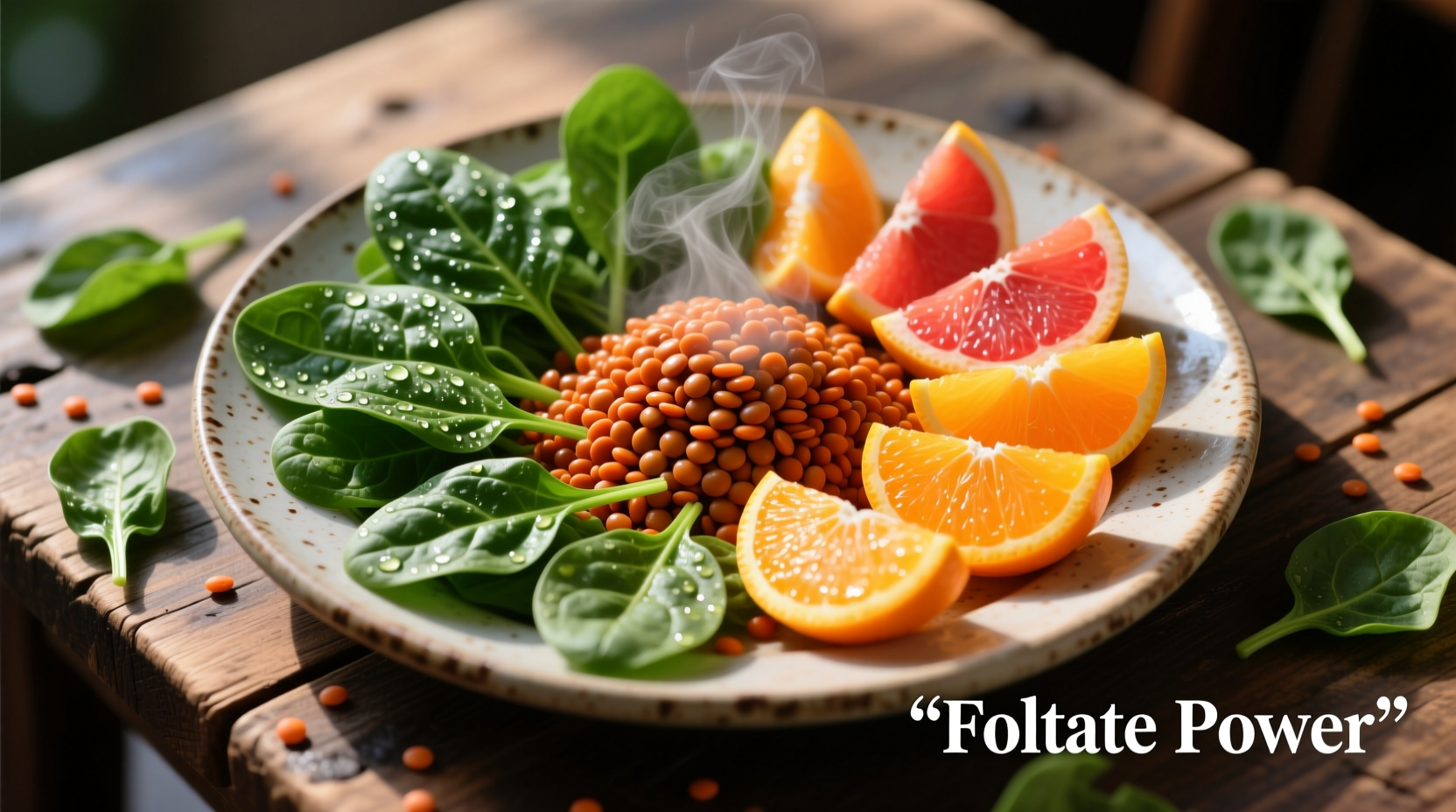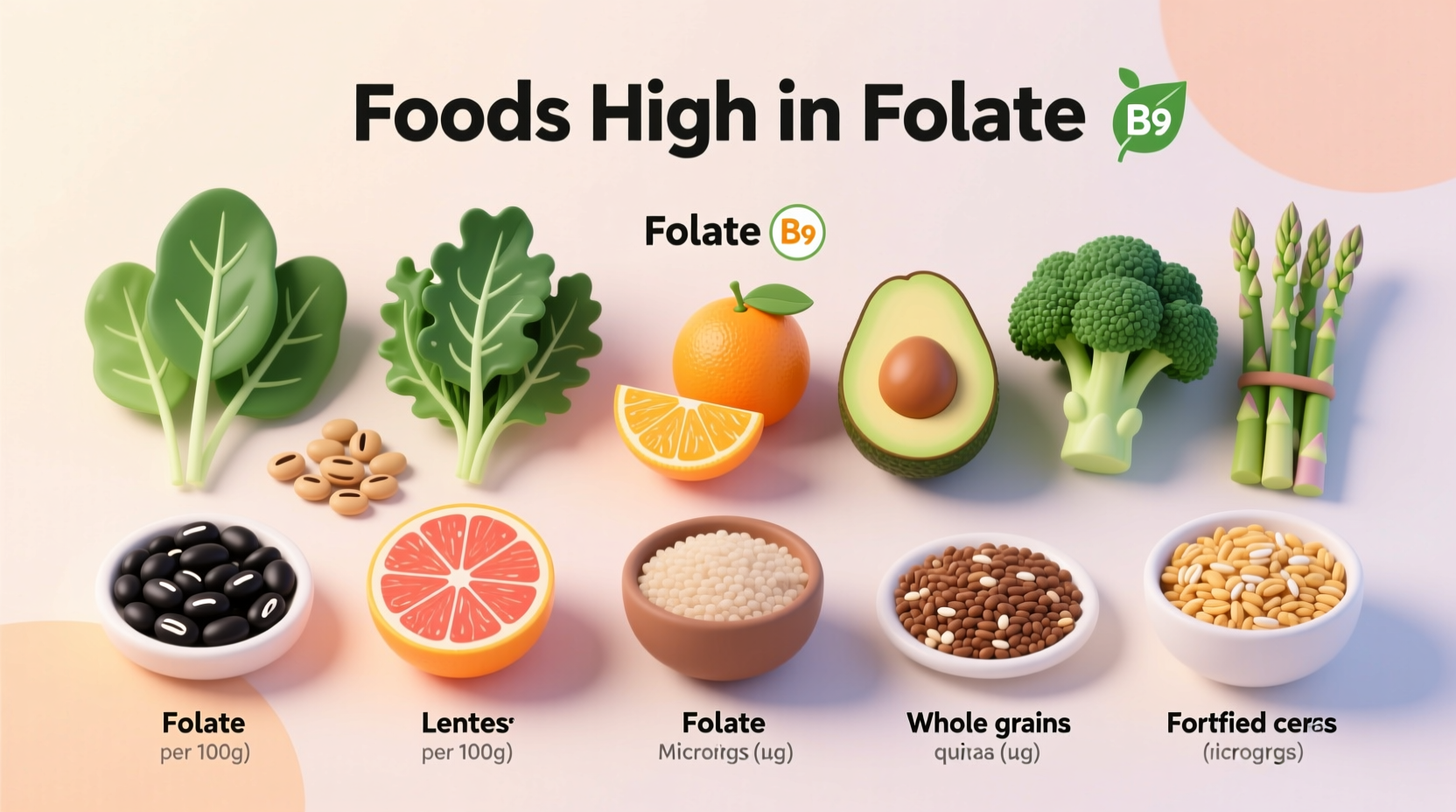If you're searching for what foods are high in folate, you'll want to focus on leafy greens, legumes, citrus fruits, and fortified grains. Just one cup of cooked lentils provides 358 mcg of folate (90% of your daily needs), while a cup of cooked spinach delivers 263 mcg (66%). These natural food sources offer the most bioavailable form of this essential B vitamin for optimal health.
Discovering which foods are highest in folate isn't just nutritional trivia—it's crucial information for maintaining optimal health, especially if you're planning a pregnancy or managing specific health conditions. Folate, the natural form of vitamin B9, plays a vital role in DNA synthesis, red blood cell formation, and preventing neural tube defects during early pregnancy. Unlike its synthetic counterpart folic acid found in supplements, folate from whole foods comes packaged with other beneficial nutrients that enhance absorption and utilization.
Why Folate Matters More Than You Think
While many people associate folate primarily with pregnancy health, this essential nutrient serves critical functions for everyone. Folate works synergistically with vitamin B12 to produce healthy red blood cells and prevent anemia. It also helps convert homocysteine to methionine, potentially reducing cardiovascular disease risk. Research from the NIH Office of Dietary Supplements indicates that adequate folate intake may support cognitive function and emotional well-being throughout life.
Adults need 400 mcg DFE (Dietary Folate Equivalents) daily, while pregnant women require 600 mcg. The challenge? Folate is water-soluble and heat-sensitive, meaning cooking methods significantly impact how much you actually absorb from your food. This explains why understanding both which foods contain folate and how to prepare them matters equally.
Naturally Folate-Rich Foods: Your Complete Guide
Leafy Greens: Nature's Folate Powerhouses
Dark leafy greens consistently rank among the top natural sources of folate. One cup of cooked spinach provides 263 mcg (66% of daily needs), while the same serving of cooked turnip greens delivers 170 mcg (43%). Raw greens like romaine lettuce (64 mcg per cup) and arugula (16 mcg per 2 cups) also contribute meaningfully to your daily intake. For maximum folate retention, steam greens lightly rather than boiling them, which can leach up to 50% of the folate into cooking water.
| Food (1 cup cooked) | Folate (mcg) | % Daily Value |
|---|---|---|
| Beef liver | 215 | 54% |
| Lentils | 358 | 90% |
| Black-eyed peas | 210 | 53% |
| Asparagus | 268 | 67% |
| Brussels sprouts | 93 | 23% |
Legumes: The Consistent Folate Champions
Legumes stand out as exceptionally reliable folate sources with impressive consistency across varieties. Cooked lentils lead the pack with 358 mcg per cup (90% DV), followed closely by black-eyed peas (210 mcg) and chickpeas (282 mcg). What makes legumes particularly valuable is their dual nutrient profile—they provide both folate and fiber, creating a synergistic effect for better nutrient absorption. According to USDA FoodData Central, soaking beans before cooking preserves more folate than pressure-cooking methods.

Citrus Fruits and Cruciferous Vegetables
Oranges and orange juice deliver significant folate—approximately 39 mcg per medium orange and 74 mcg per 8-ounce glass of juice. But don't overlook cruciferous vegetables: one cup of cooked broccoli contains 168 mcg (42% DV), while Brussels sprouts provide 93 mcg per cup. These vegetables contain natural compounds that enhance folate bioavailability when consumed with healthy fats like olive oil.
Maximizing Your Folate Absorption: Practical Strategies
Knowing what foods are high in folate is only half the equation—understanding how to optimize absorption completes the picture. Several factors influence how much folate your body actually utilizes:
- Cooking methods matter: Steaming preserves more folate than boiling; raw consumption works for some foods but not others
- Food combinations enhance absorption: Pair folate-rich foods with vitamin C sources to increase bioavailability by up to 30%
- Avoid excessive alcohol: Consuming more than two alcoholic drinks daily can reduce folate absorption by 20-30%
- Consider timing: Consuming folate-rich foods throughout the day rather than in one meal optimizes utilization
For those following plant-based diets, note that the natural folate in foods has approximately 50% bioavailability compared to folic acid in fortified products. However, whole food sources provide additional phytonutrients that support overall nutrient metabolism—a crucial consideration often missing from supplement-focused approaches.
Practical Daily Incorporation Guide
Building a folate-rich diet doesn't require drastic changes—small, consistent additions make the difference. Start your day with fortified whole-grain cereal (providing up to 100% DV per serving), add black beans to lunchtime salads, and include roasted asparagus or broccoli with dinner. For snacks, try orange slices or a small handful of sunflower seeds (82 mcg per 1/4 cup).
When planning meals, focus on variety rather than perfection. The CDC emphasizes that consistent moderate intake across multiple food groups provides more stable blood folate levels than occasional high-dose consumption. Remember that frozen vegetables often retain more folate than fresh counterparts stored for several days.
When Food Isn't Enough: Special Considerations
Certain populations may need additional support beyond dietary sources. Women capable of becoming pregnant should consume 400 mcg of folic acid daily from supplements or fortified foods in addition to food folate, as recommended by the CDC. Individuals with MTHFR gene variations may benefit from methylfolate supplements, though dietary folate remains essential. Always consult with a healthcare provider before starting supplementation, as excessive folate intake can mask vitamin B12 deficiency.











 浙公网安备
33010002000092号
浙公网安备
33010002000092号 浙B2-20120091-4
浙B2-20120091-4